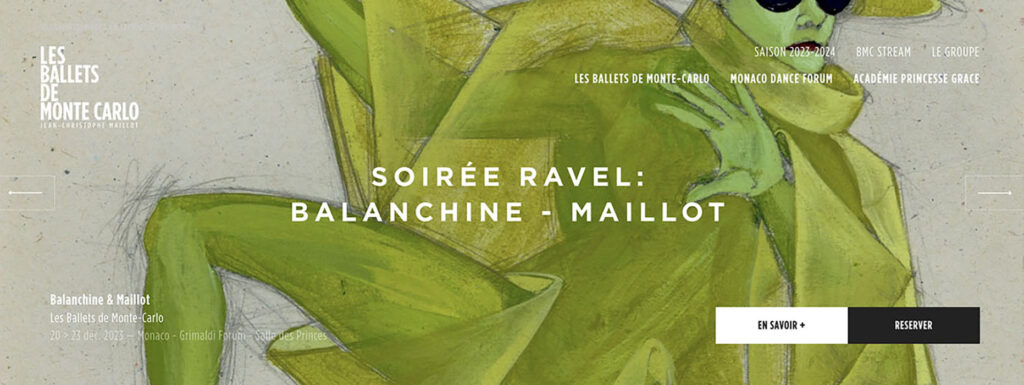
Nice Ballet Méditerranée presents a new version of what is regarded as the most famous of the Romantic era ballets – Giselle – staged and choreographed by Martin Chaix, with a sumptuous score by Adolphe Adam.
Giselle was the result of the collaboration of the three French artists – Ballet Masters Perrot and Coralli, and composer Adolphe Adam – who in 1841 were commissioned by the Ballet du Théâtre de l’Academie Royale de Musique to create a new work. Adam had previously composed for this company, and he co-opted librettists Jules-Henri Vernoy de Saint-Georges and Théophile Gautier to assist with the storyline.
It was Gautier who initially started working on the story, drawing inspiration from two sources – the poem Fantômes from Victor Hugo’s Les Orientales, which told of a Spanish girl who died after a night of frenzied dancing, and a passage in prose entitled L’Allemagne by German poet, writer and literary critic Heinrich Heine, about a Slavic tale of supernatural maidens called Wilis, young brides-to-be who die before their wedding day. Perrot and Coralli were then brought in to choreograph the work, and Giselle premiered at the Théâtre de l’Academie Royale de Musique in Paris on 28th June, 1841, with Carlotta Grisi in the title role.
The ballet tells of a frail young peasant girl who is betrayed by her beloved, the aristocratic Count Albrecht, as a result of which she dies of a broken heart. Giselle finds herself in a moonlit glade surrounded by the supernatural Wilis and their queen, Myrtha. Albrecht enters the glade to lay flowers on Giselle’s grave, and is summoned by Myrtha and her Wilis to dance to his death. The spirit of Giselle – ever forgiving, and touched by his exhaustion – pleads for mercy on his behalf, and Myrtha ultimately frees him from the vengeance of the Wilis.
Martin Chaix says of the work: “Giselle is the perfect example of a ballet from the romantic era which, beyond its ethereal and magical dimension of the second act, speaks to us in the foreground of the romantic and social-cultural relationships of the time in which it was created.” In his version of Giselle Chaix has set the ballet in our time, balancing pointe with modernity, questioning the place of women and committing himself to restoring the balance of power.
He has created a number of ballets in different styles and techniques, from classical to modern. As a dance student he was accepted at the École de Danse de l’Opéra National de Paris in 1993, and joined the Paris Opera Ballet six years later, where he made his choreographic debut. From there he moved to the Leipziger Ballet, as a soloist, and then to the Ballett am Rhein Düsseldorf Duisburg where he was a soloist until 2015, in which year he became a freelance choregrapher.
This production of Giselle by Ballet Nice Méditerranée takes place at Nice Opera from December 21st to December 29th. Adolphe Adam’s score, supplemented by the music of Louise Farrenc, is played by the Nice Philharmonic Orchestra led by Beatrice Venezia. Information on tickets and times of performance are available on the Nice Opera website.
Information sourced from Ballet Nice programme notes
Artists’ websites
This article first appeared in Riviera Buzz


